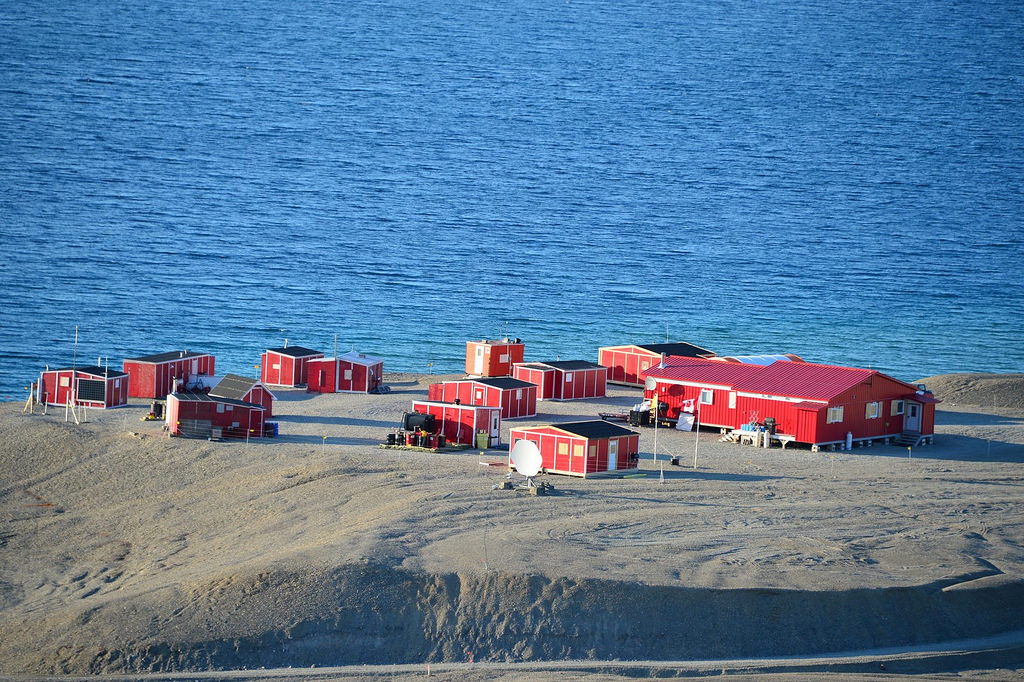
A new report released by the Arctic Council finds that the pace at which changes in the Arctic are occurring make adaptation more difficult. If policymakers don’t listen, it could lead to a dramatic loss of land and life.
Temperatures in arviat, Nunavut, a hamlet on the western shore of Hudson Bay, rose to -1C (30F) this week. The warm weather was unusual for this time of year, said Nancy Karetak-Lindell, who lives there.
“It makes it unsafe to travel [on the ice]. This means that my father’s and grandfather’s advice no longer applies when it comes to safe travel,” said Karetak-Lindell, who is the president of the Inuit Circumpolar Council Canada. “We Inuit people are known to be extremely resilient, but what we are seeing right now, due to climate change, is too much to take in one generation.”
A new Arctic Council report released in Stockholm tackles the issue of resilience in the north. The report’s authors define resilience as “the capacity to buffer and adapt to stress and shocks, and thus navigate and even shape change.” It is considered essential for communities if they are to survive the rapid and ongoing changes in the Arctic.
“I think it is already too late to avoid dramatic changes,” said Garry Peterson, a professor of environmental sciences at the Stockholm Resilience Centre and one of the report’s editors. “But it doesn’t mean that we cannot do better and improve the capacity of people in the Arctic to respond and cope with those changes.”
The report concludes a five-year scientific examination of Arctic change, important tipping points and the factors that support adaptation. Its authors call on policymakers to empower and train Northern communities to boost resilience in the region.
Arctic Regime Shifts
The report describes 19 documented or potential regime shifts, or tipping points, in the Arctic that will irreversibly change its ecosystems. They range from a shift to ice-free summers to the transformation of landscapes, as bogs drain and dry to become peatlands, and tundra is transformed into boreal forest or steppe. The authors found that the changes are occurring so rapidly and in such an intertwined fashion that it makes it difficult to predict their outcomes.
“The regime shifts that we have identified are linked with one another,” said Marcus Carson, a senior fellow at the Stockholm Environmental Institute and the report’s lead author. “Obviously, classic science is incapable of evaluating the magnitude of such complexity, and I am afraid that we should be prepared for surprises.”
As comprehensive as the report is, its authors acknowledge its limitations. “We didn’t even factor in ocean acidification, which is happening at twice the pace [in the Arctic] as in other oceans,” said Carson.
Degrees of Resiliency
Included in the report are 25 case studies of local communities that have faced pressure to adapt, with varying degrees of success. It also examines the factors that contribute to resiliency.
As an example of a resilient community, the report points to the community of Cape Dorset, Nunavut, where Inuit showed resilience to colonization and repression of their language and culture by transmitting their knowledge and cultural practices through art. That art, which is now sold on the international market, has provided income that has helped the community weather sea ice changes that reduced food security.
But others have not fared so well, notably Indigenous communities in northern Sweden and Norway, where reindeer herding communities have come head-to-head with development.
Joel Clement, director of the Office of Policy Analysis at the U.S. Department of the Interior and co-chair of the Arctic Resilience Report project, said Arctic resilience is grounded in four key areas: collecting and sharing scientific and traditional knowledge that can guide adaptive measures; providing local communities with the tools and capacity to implement those adaptive measures; ensuring that government policies and planning practices are flexible and collaborative; and finding innovative ways to finance these resilience measures.
For Clement, the priority now lies in finding innovative ways to finance resilience in the Arctic. “It is an area that the economists on my staff are investigating as we speak,” he said. “Lives and livelihoods are at stake, so we need to get creative and keep shaking the tree.”
Policymakers who deal with climate change and Indigenous rights should take note of the report, “so they can influence governments,” said Martin Sommerkorn, the head of conservation at the World Wildlife Fund’s Arctic program.
Karetak-Lindell agrees, but she would like to take it a step further: “We want to be able to do our own studies and say things about ourselves,” she said. “We have to be the policymakers, too.”
This article originally appeared on Arctic Deeply.
